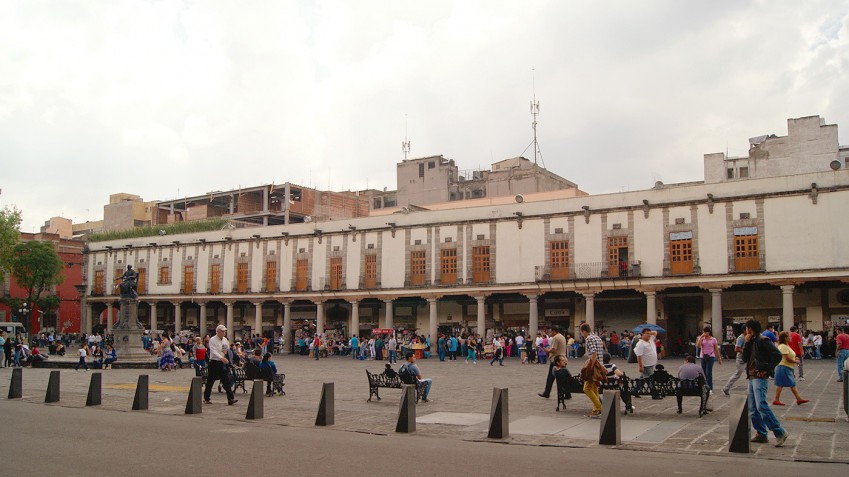
The Portal de Santo Domingo occupies the entire west side of the Plaza de Santo Domingo. And many Mexico City residents will tell you that nothing is so characteristic of the plaza as these Portales running down the western edge.
Since the early 19th century the building has also been known as the “Portal de los Evangelistas” (Portal of the Evangelists). This is in reference to the scribes, typists, and printers who moved in around that time although the building is a bit older.
Originally intended as housing for the extended community of Santo Domingo, it was designed and built by architects Diego Pedraza and Juan Jaramillo in the 17th century. The buildings at República de Cuba #s 94 and 96, originally one house, have the date “1685” engraved on one of the stone arches. At that time, they were known as the Portales de la Natividad and the Antiguo Coliseo. The building we see today was almost entirely rebuilt in the 18th century.
After Mexican Independence, the need for letter writers amongst a largely illiterate population grew exponentially. Those who served as scribes often worked with quills and ink bottles. Typewriters and various printing methods appeared only much later. The nickname “evangelists” took on a paradoxical meaning when, for a time, some of the vendors only made ends meet by dealing in forged and often illegal documents.
There is a legend that Fidel Castro bought a false passport here in the 1950s. This allowed him to cross borders and plan the Cuban Revolution, but this is most likely just a legend…
Mexico City restored the building in 1968, removing many of the alterations that had been made over the course of the building’s 300-year life. Today it’s still an important center for printing invitations, academic theses, and certain types of official certificates.
It shouldn’t be forgotten that the Santo Domingo Portal has also housed some of the oldest “puestitos” in the City. Before our era of street stalls made of plastic tarps and metal tubes, many people made their livings from tiny wooden stalls. Some are still in use here and to the north of the Plaza, in the shadow of the church next to Leandro Valle. They are the wonderful remnants of a world long gone by.
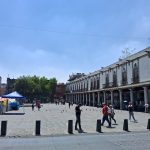 When Tenochtitlan fell to the Castilian troops of Hernán Cortés, the city was refounded with the western town planning of Alonso García Bravo. Leaving the free space of the plaza in front of the convent of Santo Domingo, the side facing west was destined for housing. By disposition of the Spanish Crown the owners of the lands that faced the city squares had to build portals where the population could take refuge.
Since the 17th century, the portals of the Nativity or of the Old Coliseum stood on the Plaza of Santo Domingo. In the 18th century, these were changed without altering the harmony of the houses and the portal. By the 19th century, scribes relocated here to free up occupy part of the Portal of Merchants (Mercaderes) on the Zocalo. Since then, the space was renamed the "Portal of the Evangelists" remembering Matthew, Mark, Luke and John who are remembered in the act of writing.
When Tenochtitlan fell to the Castilian troops of Hernán Cortés, the city was refounded with the western town planning of Alonso García Bravo. Leaving the free space of the plaza in front of the convent of Santo Domingo, the side facing west was destined for housing. By disposition of the Spanish Crown the owners of the lands that faced the city squares had to build portals where the population could take refuge.
Since the 17th century, the portals of the Nativity or of the Old Coliseum stood on the Plaza of Santo Domingo. In the 18th century, these were changed without altering the harmony of the houses and the portal. By the 19th century, scribes relocated here to free up occupy part of the Portal of Merchants (Mercaderes) on the Zocalo. Since then, the space was renamed the "Portal of the Evangelists" remembering Matthew, Mark, Luke and John who are remembered in the act of writing.
Heart of Mexico Walking Routes: Santo Domingo - Santa Catarina
< < SEP | Expiración Chapel > >
Proyecto “Corredor de Cultura Digital”.
Nombre de la investigación: Investigación Centro Histórico, Monumentos, Edificios y Puntos de Interés (2023)
Dirección de investigación y diseño de Rutas: Acércate al Centro A.C. Guadalupe Gómez Collada
Coordinación e investigación histórica: Fideicomiso del Centro histórico Dir. Maestra Loredana Montes
Historic Center Trust Dir. Maestra Loredana Montes

Nearest at 0.04 kms.
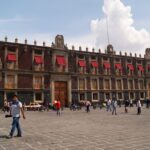
Nearest at 0.05 kms.
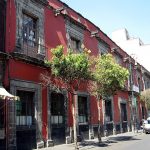
Nearest at 0.05 kms.
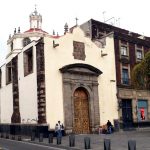
A remarkable chapel on the edge of the Plaza de Santo Domingo . . .

One of Central Mexico City's most important historic plazas . . .

The old customs building today shows off some the SEP's extensive art collection.
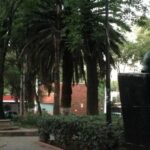
One of the most dramatic of old Baroque temples in the City, this one is the parish church of La Lagunilla.
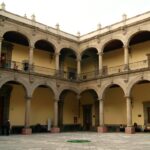
Still one of the most magnificent of center city palaces, that of the Inquisition is not one to miss.